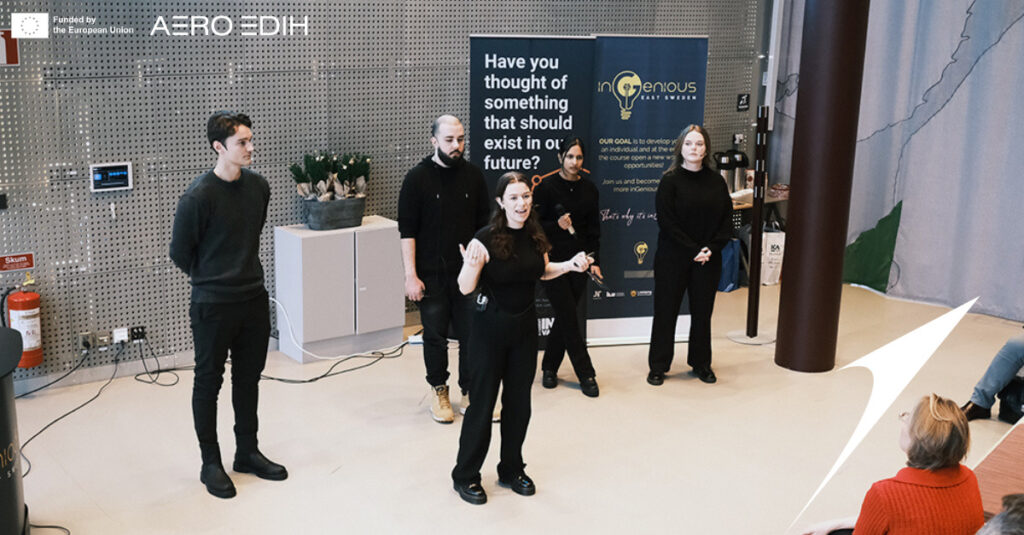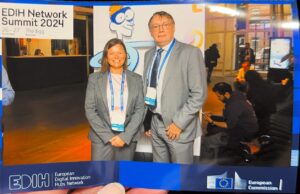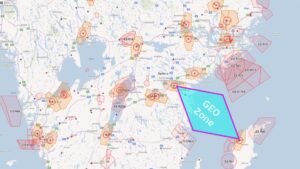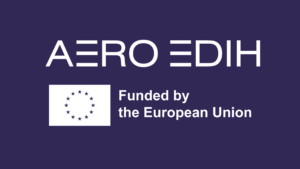SkyCare
This project, called SkyCare initiated in collaboration with Region Östergötland, AERO EDIH and Norrköping Science Park, aimed to improve emergency medical care outside the urban core by harnessing the potential of drone technology. The overarching goal was to reduce response times and enhance patient outcomes in the remote areas.
The team comprises five members: Carl, Jakub, Lisa, Nikita, and Sofia. Each member brings diverse experiences and pursues distinct programs at Linköping University. This diversity enriches our collective skill set, allowing them to contribute uniquely to their collaborative efforts.
The challenge was to bring emergency medical care quickly to remote areas using drones, provided by Region Östergötland in collaboration with AERO EDIH and Norrköping Science Park. Originally, the challenge had a broad scope, where the idea was to use drones to deliver defibrillators and provide some kind of media coverage, but all additional services were welcome, and boundaries were scarce. Through communication with representatives from both Region Östergötland and Norrköping Science Park the challenge became clearly formulated.
The reason for the challenge being set and the importance of the solution lies in the current conditions of citizens currently outside of the urban core and their chances of a medical emergency. In many parts of Sweden it could take an ambulance more than ten minutes to reach a patient, with a median response time of 15,2 minutes (Åsheden, 2023), but within this timeframe many medical emergencies can go from severe to critical. This can be addressed by the use of drones and may become a critical part of the emergency services response, and their success rate.
Drones have the potential to significantly enhance emergency response operations. While they are recognized for their ability to deliver medical supplies rapidly, their use in surveillance is equally vital. A key challenge in emergency situations, as discussed with SOS Alarm personnel, is locating individuals in distress, particularly in regions with sparse cell tower coverage. These towers are crucial for triangulating a caller’s position using Advanced Mobile Location technology. Drones could greatly reduce search times in these large, less accessible areas. Additionally, integrating drones with the SOS Alarm application, which automatically transmits the caller’s location, could further streamline the rescue process. Drones also offer valuable insights into the extent and severity of unfolding emergencies.
The purpose of the project is to create an innovative and adaptable solution for delivering emergency services outside of the urban core to save lives.
External stakeholders
Region Östergötland, as the main stakeholder and challenge provider, greatly influences this project aimed at integrating advanced drone technology into healthcare. Their focus is on improving patient outcomes. Health care workers, particularly ambulance paramedics, play a vital role in using and providing feedback on drone technology. Their insights are critical for the project’s success and integration. SOS Alarm workers are also key stakeholders, with their use of drones in emergencies being essential for aligning with emergency protocols and enhancing response efficiency. Additionally, police and fire departments’ involvement are crucial for expanding drone applications in surveillance and emergency scenarios. Central to the project are rural residents, with the goal of tailoring drone technology to their specific needs and improving survival rates in critical situations outside urban areas.
Result of the project
The project aimed to demonstrate how drones can significantly impact emergency response, drawing from research and expert interviews. Drones proved effective in critical care delivery during emergencies like cardiac arrests, navigating traffic and obstacles efficiently. The focus was on aiding medical assistants outside urban areas.
Drones’ surveillance capabilities, covering large areas for tasks like traffic management and search operations, are also notable. They feature customizable options like various medical tools and cameras with heat vision. Skycare’s initial year involves analyzing customer needs and potential improvements.
In Östergötland, integrating drones with SOS alarm services could greatly improve response times and augment surveillance. With ambulances reserved for life-threatening situations, drones can offer immediate aid, enhancing SOS Alarm’s efficiency and reducing casualties. Skycare plans to strategically place drones for quick deployment, coordinating with regional and partner personnel as needed.

















